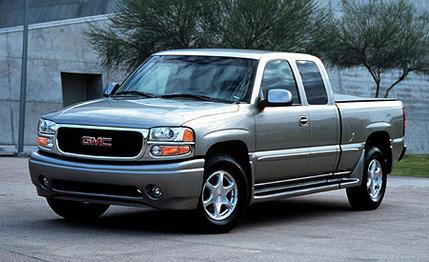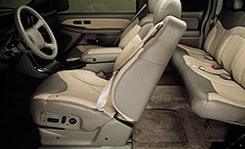
 Long-Term Road Test
Long-Term Road Test
From our perspective, and we're not alone on this issue, one man's GMC Sierra is another man's Chevy Silverado. Aside from superficial distinctions--badging and trim--these two pickup trucks have been accurately perceived as all-but-identical cousins for a long, long time. This perception was okay until GMC Truck began hungering for an identity of its own. That hunger became the wellspring of "professional-grade trucks," the divisional mantra that still has people saying, "What?" And it was also the wellspring of the Sierra C3.
Okay, the C3 (since rechristened the Sierra Denali) is composed of the same basic hardware as its Chevy Silverado counterpart. But the differences go a bit beyond mere smoke, mirrors, and stinking badges. For example, when you sign up for this premium model, you get a version of GM's 6.0-liter Vortec V-8 with more horsepower (325) and torque (370 pound-feet) than you can get in other Sierra half-tonners. Another example: You get a full-time all-wheel-drive system, as distinct from GM's Autotrac four-wheel drive, which lacks the C3's center differential. You also get an extended cab with rear demi-doors and ample room for five, plus a very nice menu of luxo goodies--OnStar, leather, premium audio, power everything.


GMC marketing types suggested that the C3 was "European" in character, an interesting slant since you see trucks like this in Europe about as often as you see snow in Santa Monica. Nevertheless, its personality differed enough from the rest of GM's full-size pickup tribe--including the Silverado we'd sent home after some 13 months of service (July 2000)--that we wanted to take a 40,000-mile look at this rolling mission statement from GMC Truck.
We're glad we did. Although there were some minor nits, the Sierra performed with distinction, aplomb, and spirit throughout its 10-month tour of duty here.
Spirit: The C3 isn't a sports truck in the unabashed bad-boy sense of Ford's SVT F-150 Lightning. Although it has a little extra grunt compared with the other 1500-series Sierras, it's no wheelspin generator. On the other hand, for a vehicle weighing in at 5320 pounds, it's not slow, either, and as the miles piled up, it kept getting quicker.
In its initial acceleration testing at 1269 miles, the C3 sprinted to 60 mph in 7.8 seconds and covered the quarter-mile in 16 seconds flat at 86 mph. Not bad, but distinctly ho-hum compared with its end-of-test session with 39,200 miles on the clock. The 60-mph time improved to 6.8 seconds, and the Sierra ran the quarter in 15.2 seconds at 87 mph.
Braking and skidpad performance also improved, the former quite dramatically. In its inaugural test, the C3 needed 210 feet to stop from 70 mph; at test's end, with all those miles on the Michelin Cross Terrain tires (P265/70SR-17), stopping distance shrank to 192. The skidpad number, for its part, inched up from 0.70 g to 0.71.
Fuel economy is an oxymoron with a vehicle such as this. The C3 was EPA-rated at 11 mpg in the city, 14 on the highway. Our average for the duration of the test was 14 mpg, which is better than we expected in view of its frequent towing duties.
Nits: Although the Sierra got generally high marks as a highway cruiser, with or without a trailer in tow, at 2240 miles the logbook noted a harmonic vibration "at about 80 mph, guaranteed to make those within the cab crazy." Markus fixed this temporarily with a little duct tape around the upper windshield, and it was later fixed permanently by replacing the windshield seal, a repair made under warranty.
Other nits were ongoing. The four-speed automatic provoked several complaints about harsh kickdowns, with or without the "tow/haul" feature that is designed to prevent excessive shifting up and down when the truck is packing a big load. This is unusual for a GM automatic transmission, and it's not something we've encountered in other full-size trucks from the current Chevy/GMC lineup, so we put it down as a peculiarity of this particular unit.